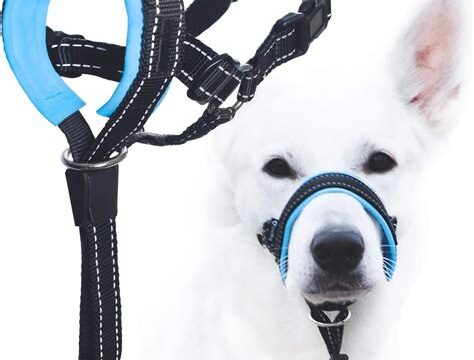Discover the perfect collar for your dog – traditional, martingale, or prong – and choose the best material for control and
Traditional Collars
Traditional collars are the most common type of dog training collar and come in a variety of materials, including leather, nylon, or metal. These collars are designed to provide basic control during walks and are suitable for most dogs. They are easy to put on and take off, and can be adjusted for a comfortable fit. Traditional collars are a good option for dogs that do not have any behavioral issues and simply need to learn leash manners.
When choosing a traditional collar for your dog, it’s important to select the right size and material. Leather collars are durable and comfortable, while nylon collars are lightweight and easy to clean. Metal collars, such as chain or prong collars, provide extra control for strong-willed dogs. It’s essential to ensure that the collar fits snugly without being too tight, and always monitor your dog’s behavior when using a traditional collar.
In conclusion, traditional collars are a practical and versatile option for dog training. They provide the necessary control and safety during walks and are suitable for most dogs. It’s important to choose a collar that fits well and is comfortable for your dog, and to use it responsibly to ensure your dog’s well-being.
Input: Basic control during walks
When it comes to taking your dog for a walk, one of the most important things is having basic control over their movements. This is where the type of dog training collar you choose comes into play. A traditional collar is a popular choice for providing this basic control during walks. This type of collar is made from materials such as leather, nylon, or metal, and is suitable for most dogs.
For dogs who tend to be escape artists, a martingale collar can be the ideal choice for controlling their movements during walks. This collar is designed to prevent escape, with a limited closure for safety. It is particularly well-suited for breeds such as Greyhounds and Whippets, who are known for their agility and speed.
Another option for controlling your dog during walks is a prong collar. This type of collar can be effective for strong-willed dogs who may be more challenging to control. However, it’s important to use this type of collar with caution and under the guidance of a professional trainer, as it can be controversial and potentially harmful if not used correctly.
Development: Leather, nylon, or metal
When it comes to training collars for your dog, there are various materials to choose from, including leather, nylon, and metal.
Leather collars are not only durable and stylish, but they also tend to be more comfortable for your dog to wear. They are less likely to cause irritation or chafing on your dog’s skin, making them a popular choice for many pet owners.
Nylon collars, on the other hand, are known for their versatility and easy maintenance. They come in a wide range of colors and designs, making it easier for you to find a collar that reflects your dog’s personality. Additionally, nylon collars are often more affordable than leather or metal options.
Finally, metal collars, such as those made from stainless steel or chrome, are incredibly durable and can withstand even the strongest of pullers. They are a great choice for dogs who tend to chew on their collars, as they are less likely to become damaged. However, it’s important to ensure that the metal collar is the right size and weight for your dog to prevent discomfort or injury.
Result: Suitable for most dogs
When it comes to choosing the right collar for your dog, there are a variety of options to consider. One type of collar that is suitable for most dogs is the traditional collar. Traditional collars are a classic option that works well for many breeds and sizes of dogs. They are typically made of durable materials such as nylon, leather, or metal, and are designed to provide basic control during walks and outings.
These collars are often adjustable, making them suitable for dogs of all sizes. This makes them a versatile option for pet owners with multiple dogs. Traditional collars are also available in a wide range of styles and designs, allowing owners to choose a collar that not only suits their dog’s needs, but also reflects their personal tastes.
Overall, traditional collars are a practical and reliable choice for most dogs. They provide the control and security needed during walks and outings, while also offering a comfortable and customizable fit. With the right traditional collar, pet owners can ensure their dog’s safety and well-being while out and about.
Martingale Collars
Understanding the Different Types of Dog Training Collars
The Martingale collar is a type of dog training collar designed to prevent escape for escape artists. Unlike traditional collars, Martingale collars feature a limited closure for safety, making them ideal for dogs with narrow heads such as Greyhounds and Whippets. These collars are designed to tighten only to a certain extent, preventing the dog from slipping out of the collar while providing a gentle correction when necessary.
Developed with the specific needs of certain breeds in mind, Martingale collars are typically made from a combination of nylon and metal hardware, providing durability and security during walks. The limited closure mechanism ensures that the collar fits comfortably around the dog’s neck, reducing the risk of choking or injury.
While Martingale collars are suitable for dogs with narrow heads and strong prey drives, they are not recommended for dogs with severe aggression issues or those that pull excessively on the leash. It’s important to understand the specific needs of your dog and consult a professional trainer before deciding on the most suitable training collar.
Input: Prevents escape for escape artists
Understanding the Different Types of Dog Training Collars
Input: Prevents escape for escape artists
Escape artist dogs can be a challenge to control during walks, as they often find ways to slip out of their collars. To prevent this, martingale collars are an ideal choice. These collars feature a limited closure that tightens when the dog pulls, preventing them from slipping out. This design provides a safe and effective solution for escape artist dogs, giving owners peace of mind during walks.
Another type of collar that can be effective for escape artist dogs is the harness. By distributing pressure across the chest and back, harnesses provide more control and security, making it difficult for dogs to escape. For extra security, consider a harness that features a front clip to discourage pulling and redirect the dog’s attention back to their owner.
Development: Limited closure for safety
When it comes to choosing a dog training collar, it’s important to consider the development process of each type. One type of collar that undergoes a unique development process is the Martingale collar. These collars are designed with limited closure for safety, ensuring that the dog cannot slip out of the collar during walks. This design feature provides added security for pet owners who want to ensure their dog’s safety while out and about.
The limited closure of Martingale collars is achieved through a combination of materials and design elements. Typically made from a combination of nylon or other sturdy materials, Martingale collars are designed to provide a snug fit without choking or putting undue pressure on the dog’s neck. This ensures that the collar stays securely in place while still allowing for comfortable movement, making it an ideal choice for dogs with slim necks, such as Greyhounds and Whippets.
In addition to their limited closure for safety, Martingale collars are also known for their effectiveness in preventing escape. The design allows for gentle correction without compromising the dog’s safety, making it a popular choice for pet owners who want a reliable and humane training tool. Overall, the development of Martingale collars with limited closure for safety makes them a suitable option for pet owners looking for a training collar that prioritizes both security and comfort.
Result: Ideal for Greyhounds and Whippets
When it comes to choosing the right collar for your Greyhound or Whippet, it’s important to consider their unique needs. These breeds are known for their slender necks and can be prone to slipping out of traditional collars. That’s where the Martingale collar comes in. This type of collar is designed with a limited closure, which prevents escape but also ensures safety for your dog.
Unlike traditional collars, Martingale collars provide a gentle and even distribution of pressure around the neck, making them ideal for these sighthound breeds. The result is a collar that is both secure and comfortable for your Greyhound or Whippet, allowing you to have peace of mind during walks or outings. With the Martingale collar, you can rest assured that your pet is safe and secure, without the risk of slipping out of their collar.
In conclusion, for Greyhounds and Whippets, the Martingale collar is the ideal choice. Its unique design and limited closure make it the perfect solution for preventing escape without compromising safety and comfort. With this type of collar, you can confidently take your sighthound for walks, knowing that they are secure and protected. So, if you’re in need of a reliable collar for your Greyhound or Whippet, consider investing in a Martingale collar for the best results.
Prong Collars
Prong collars, sometimes referred to as pinch collars, are a type of training collar designed to provide control over strong-willed dogs. These collars consist of a series of metal links with blunt prongs on the inside, which when used properly, can effectively communicate with the dog without causing pain or injury.
Although prong collars have been the subject of controversy and criticism, when used correctly, they can be a valuable tool for training certain dogs. Because of their potential for misuse, it is important to seek guidance from a professional dog trainer before using a prong collar.
Understanding the proper use and limitations of prong collars is essential for ensuring the safety and well-being of the dog. When used as intended, prong collars can be an effective and humane means of managing strong-willed dogs.
Input: Effective for strong-willed dogs
Dogs that are strong-willed and stubborn can be a challenge to train, but there are training collars that can help in the process. One such collar is the Prong Collar, which is designed to provide effective control over dogs that tend to pull and resist commands. The key input of the Prong Collar is its ability to provide strong correction without causing harm to the dog. This makes it a suitable option for dogs that require a firmer hand in their training.
The development of the Prong Collar involves the use of metal prongs that gently apply pressure around the dog’s neck when it pulls or resists. This limited closure design ensures that the collar does not choke the dog, while still delivering the necessary correction. As a result, the Prong Collar is an ideal choice for strong-willed dogs that require a training tool with a balanced approach to control and safety.
While the Prong Collar can be an effective training aid for strong-willed dogs, it is important to note that it should be used responsibly and under the guidance of a professional dog trainer. By understanding the input, development, and result of the Prong Collar, dog owners can make an informed decision regarding its suitability for their strong-willed pets.
Frequently Asked Questions
What are the different types of dog training collars?
The different types of dog training collars include choke collars, prong collars, shock collars, and citronella collars.
Are shock collars effective for training dogs?
Shock collars can be effective for certain types of training, but they should be used with caution and under the guidance of a professional trainer.
What are the potential drawbacks of using choke collars?
Choke collars can potentially cause injury to the dog’s neck if not used properly, and they may also not be suitable for all dogs.
How do citronella collars work?
Citronella collars release a spray of citronella scent when the dog barks, which is intended to discourage barking behavior.
What are some alternative methods of dog training that don’t involve training collars?
Positive reinforcement training, clicker training, and obedience training classes are all methods of training that do not involve the use of training collars.
Are prong collars safe for dogs?
Prong collars, when used correctly, can be safe for dogs and are designed to distribute pressure more evenly around the neck compared to choke collars.
What should I consider when choosing a training collar for my dog?
Consider your dog’s size, temperament, and training needs, as well as consulting with a professional trainer to determine the most suitable training collar for your dog.





